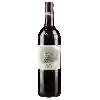
Winery Grands Vins de GirondeDuc de Meynet Bordeaux
This wine is a blend of 2 varietals which are the Cabernet-Sauvignon and the Merlot.
This wine generally goes well with poultry, beef or veal.
Food and wine pairings with Duc de Meynet Bordeaux
Pairings that work perfectly with Duc de Meynet Bordeaux
Original food and wine pairings with Duc de Meynet Bordeaux
The Duc de Meynet Bordeaux of Winery Grands Vins de Gironde matches generally quite well with dishes of beef, veal or game (deer, venison) such as recipes of chickpeas spanish style, veal cutlets parmigiana or rabbit with cider and mushrooms.
Details and technical informations about Winery Grands Vins de Gironde's Duc de Meynet Bordeaux.
Discover the grape variety: Cabernet-Sauvignon
Cabernet-Sauvignon noir is a grape variety that originated in France (Bordeaux). It produces a variety of grape specially used for wine making. It is rare to find this grape to eat on our tables. This variety of grape is characterized by small bunches, and small grapes. Cabernet-Sauvignon noir can be found in many vineyards: South-West, Loire Valley, Languedoc & Roussillon, Cognac, Bordeaux, Armagnac, Rhone Valley, Provence & Corsica, Savoie & Bugey, Beaujolais.
Informations about the Winery Grands Vins de Gironde
The Winery Grands Vins de Gironde is one of of the world's great estates. It offers 158 wines for sale in the of Bordeaux to come and discover on site or to buy online.
The wine region of Bordeaux
Bordeaux, in southwestern France, is one of the most famous, prestigious and prolific wine regions in the world. The majority of Bordeaux wines (nearly 90% of the production Volume) are the Dry, medium and Full-bodied red Bordeaux blends for which it is famous. The finest (and most expensive) are the wines of the great châteaux of Haut-Médoc and the right bank appellations of Saint-Émilion and Pomerol. The former focuses (at the highest level) on Cabernet Sauvignon, the latter on Merlot.
The word of the wine: Aging on lees
Maturing on the lees enhances the stability, aromatic complexity and texture of white wines, which gain in body and volume. This phenomenon is induced by autolysis, the process of self-degradation of the lees.














